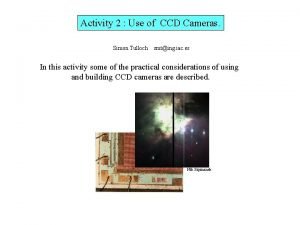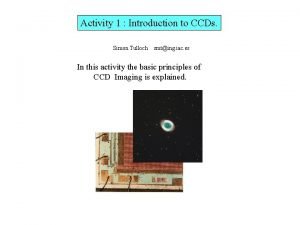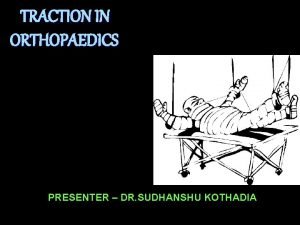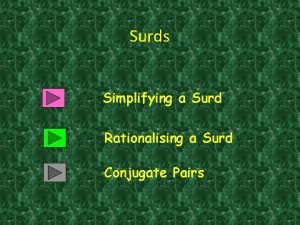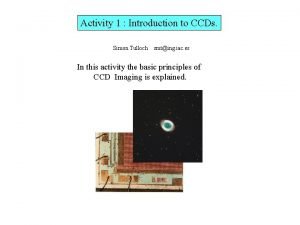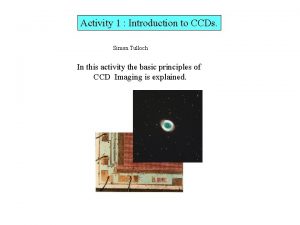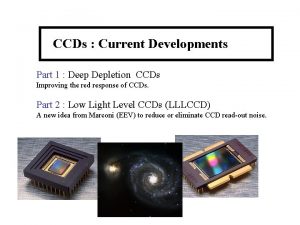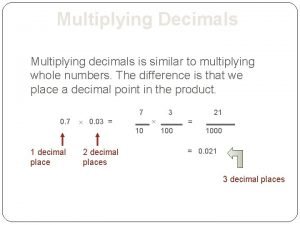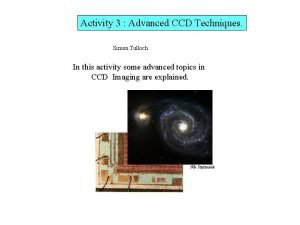Electron Multiplying CCDs An Introduction Simon Tulloch www










- Slides: 10

Electron Multiplying CCDs An Introduction Simon Tulloch www. qucam. com

Electron Multiplying CCDs Store Area Avalanche multiplication takes place in Multiplication Register, using an HV clock (40 -45 Volts). 1000 e- signal out Commercially available : CCD 60 128 x 128 Multiplication register 1 e- in Normal Serial register Image Area Multiplication register Standard MOSFET amplifier CCD 87/97 512 x 512 CCD 201 1 K x 1 K

Flexible Operation E 2 V CCD 201 Electron Multiplying Amplifier Conventional Amp. 3 e noise clock left To Observe: Absorption lines Bright Emission Lines Emission lines superimposed on bright continuum clock right <<1 e noise To Observe: Faint Emission Lines

Multiplication Clocking 1 In this diagram we see a small section of the gain register Potential Energy Gain electrode

Multiplication Clocking 2 Gain electrode energised. Charge packets accelerated strongly into deep potential well. Energetic electrons loose energy through creation of more charge carriers (analogous to multiplication effects in the dynodes of a photo-multiplier). Potential Energy Gain electrode

Multiplication Clocking 3 Potential Energy Clocking continues but each time the charge packets pass through the gain electrode, further amplification is produced. Gain per stage is low, <1. 015, however the number of stages is high so the total gain can easily exceed 10, 000

Multiplication Noise Flat fields taken with an EMCCD show unusual statistics. The variance in the flat fields is no longer equal to the mean signal as is expected with photon statistics. Effect is to increase the photon noise by a a factor of

EMCCD becomes competitive at lower exposure levels With EM Gain: At low illumination, photons are resolved. Also visible is the Clock Induced Charge (CIC) which is the dominant noise source (typical value 0. 03 e-) Without EM Gain: object only just visible above noise.

EMCCD range of operation So at higher expsoure levels the EMCCD actually performs worse than a normal CCD EMCCD wins due to zero read noise EMCCD loses due to multiplication noise

Early EMCCD Demonstrations 1) Crab Nebula pulsar at 180 fps 2) Photon interference in the lab Cryogenic CCD 87 imaging a faint pinhole Threshold Raw input frames Particles? Thresholded and accumulated Waves?

